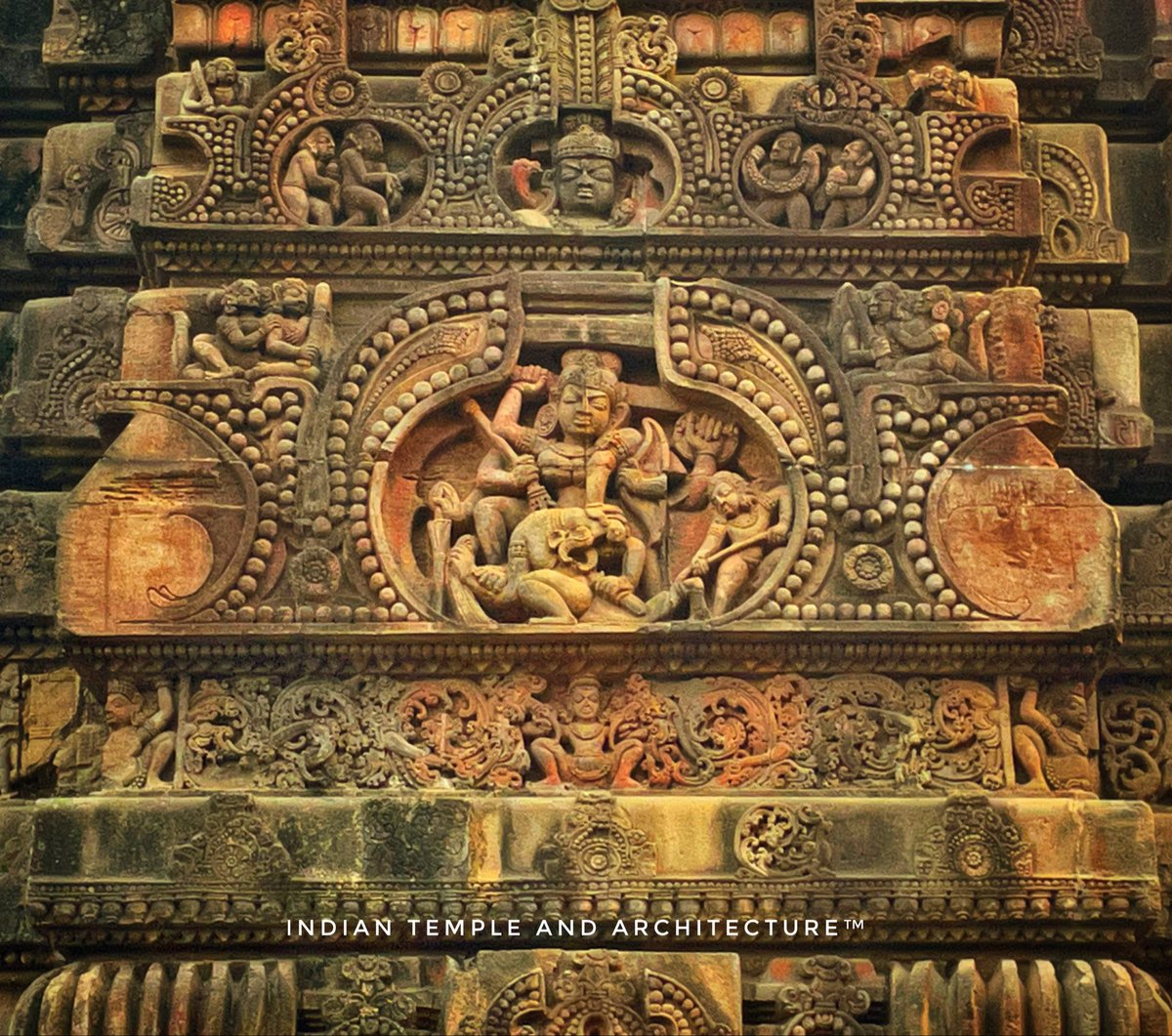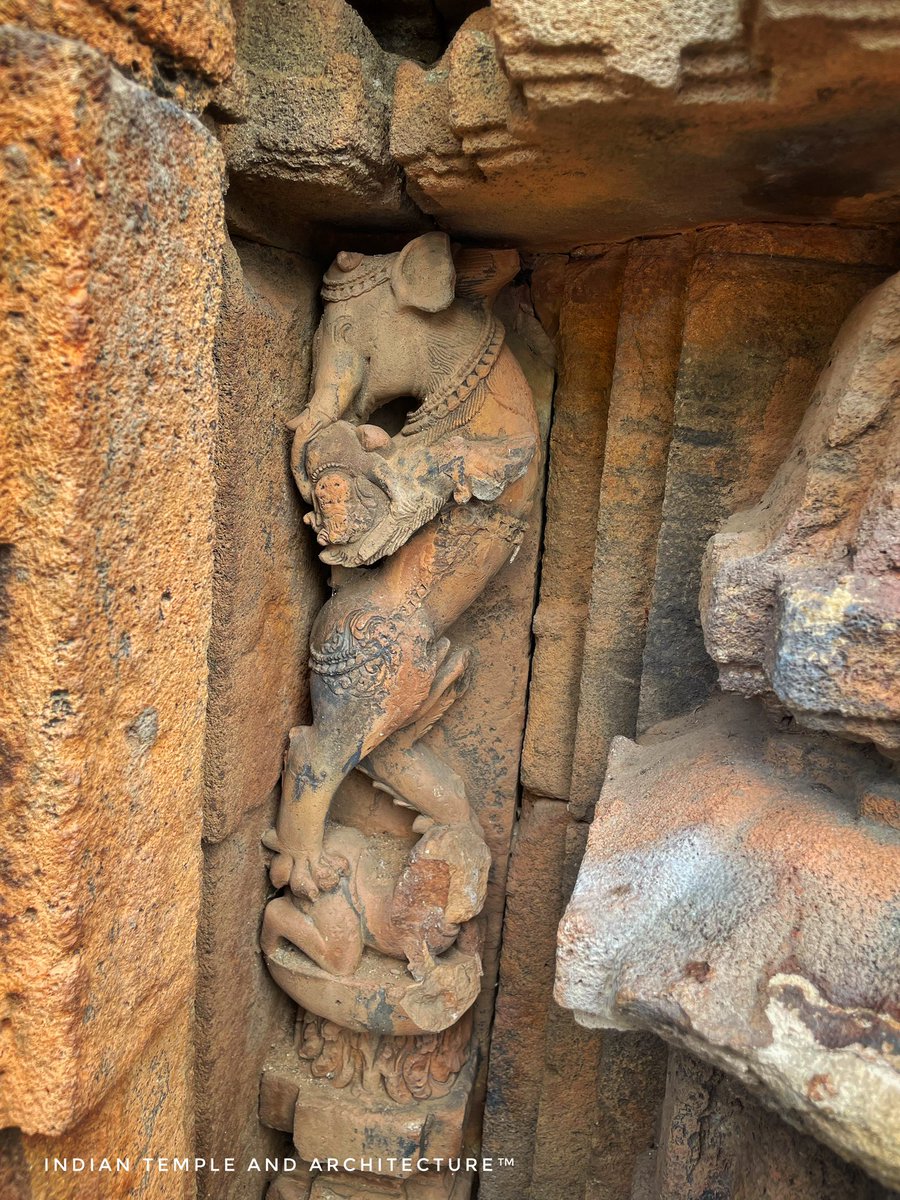22 Parshurameshvara Temple, Bhubaneswar, #Odisha
The beautiful sculpture of Karttikeya in the east raha niche, where he is seated in Lalitasana on a throne with his right hand holding a vija-puraka and his left hand the shakti.
⬇️
The beautiful sculpture of Karttikeya in the east raha niche, where he is seated in Lalitasana on a throne with his right hand holding a vija-puraka and his left hand the shakti.
⬇️

He is ornately bejewelled with a double-strand necklace having various shaped hanging pendants, a yajitopavita formed of interlocking chain-links, a pearl-string waist-belt, chain-like girdle, jewelled arm-bands with dripping festoons, anklets and bracelets.
⬇️
⬇️

His coiffure is arranged in the sikhandaka-mode with a jewelled diadem on the forehead and patra-kundalas hang from his ears. The halo behind his head has a beaded border and is crowned by a canopy. On either side of the canopy is vidyadharas carrying the garlands of pearls.
⬇️


⬇️



The peacock is carved on the pedestal rather than beneath the seat. It pecks at the serpent trodden under its feet. The throne seat is supported at the comers by legs carved as jars. The inside jambs of the niche are decorated with bhararaksakas
⬇️

⬇️


(I have already made a thread about them), kneeling devotees, standing attendants and flying vidyadharas, the latter consisting of a head and shoulders only with the hands holding a garland.
🙏🏽🚩
🙏🏽🚩

• • •
Missing some Tweet in this thread? You can try to
force a refresh

 Read on Twitter
Read on Twitter



















